8. Stray Cat Rock: Sex Hunter (Yasuharu Hasebe, 1970)
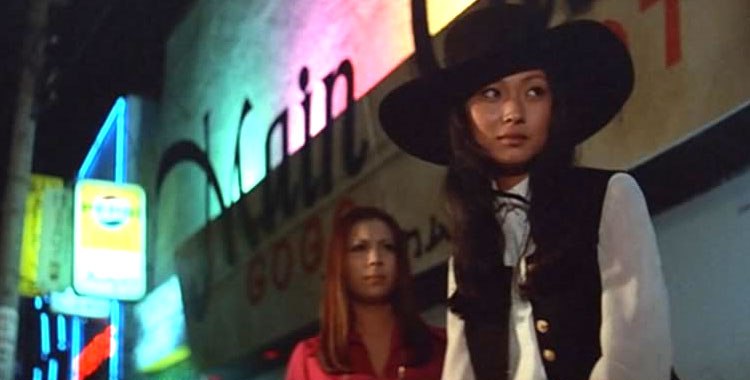
“Sex Hunter” is the most famous and probably the best part of the “Stray Cat Rock” exploitation series, particularly for its depth, since it also included themes of racism. Furthermore, in distinct cult fashion, it was shot simultaneously with the previous part, with the common actors constantly moving between the two filming locations.
The film revolves around two delinquent gangs; one dominated by females, named “Alleycats” and led by Mako and one by males, named “Eagles” and led by the Baron. The two of them are on friendly terms, and the leaders even share the same bed, as is the case with other members of the gangs.
However, things turn for the worse when an Alleycat girl dumps an Eagles member named Susumu for a half-Japanese, half-African American named Ichiro, an act Mako repeats with another half-breed named Kazuma. The acts enrage the Eagles and especially the Baron, whose sister was raped by a half-breed many years ago. He subsequently embarks on a racism trip against every half-breed in town, as well as the Alleycats.
Yasuharu Hasebe directed a film that, apart from the usual exploitation themes of sex and violence, includes a clear message about racism, with the half-breeds presented as productive members of society whose lives are tumbled by the worthless members of the Eagles.
Furthermore, Hasebe drew largely from the cult-favorite cast that includes Meiko Kaji as Mako, Tatsuya Fuji as the utterly smooth-looking Baron, and the half-Italian Rikiya Yasuoka as Kazuma.
9. Emperor Tomato Ketchup (Shuji Terayama, 1971)
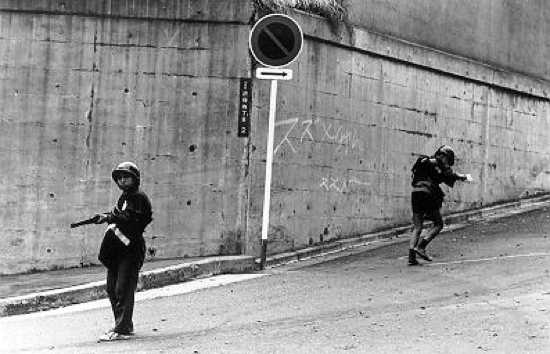
Shuji Terayama, a prolific artist who was also a poet, dramatist, writer, and photographer, was also the most prominent member of a wave in Japanese cinema during the 60s, which consisted of noncommercial experimental films, which most cinemas refused to screen. This particular one is a distinct example of the tendency, and Terayama’s most notorious production.
“Emperor Tomato Ketchup” is more a collage of anarchic and provocative images and notions depicted in surrealistic fashion and abstract narration, than an actual film. It takes place in a Japan where children have gained control, and in the aforementioned aspect, it presents images of children’s nude and erotic scenes, children roaming around in soldier uniforms shooting at leisure, and children humiliating their parents.
The film’s extremity was so overwhelming that the 75-minute production was initially released as a 27-minute short and it took 25 years for the original version to appear, 13 years after Terayama’s death.
10. Ecstasy of the Angels (Koji Wakamatsu, 1972)
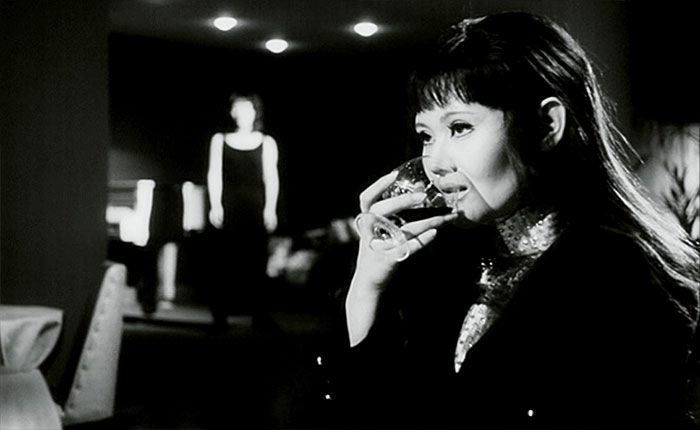
The script revolves around a cell of a revolutionary group, whose leader’s alias is “October” and its members are named after the days of the week. During an infiltration mission in a US military warehouse, several members are killed and October is permanently blinded, although they manage to steal a number of bombs.
Nevertheless, the leaders of the organization deem October unfit to continue the struggle and subsequently send the head of another cell to retrieve the bombs from the apartment where the remaining members of the group are hiding. Feeling betrayed and isolated, October and his soldiers proceed on taking matters into their own hands. What follows is an alternation between sex, violence, and scenes in a cabaret.
Koji Wakamatsu’s uniquely cult style, which mixes social and political themes with exploitation and obscure art house aesthetics, found its apogee in this black and white film that deals with human decadence and the failure of the student movement that occurred in Japan during the late 60s and early 70s.
11. Hiroshima Death Match (Kinji Fukasaku, 1973)
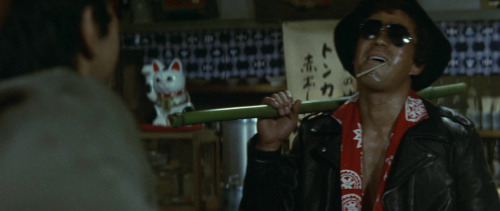
The five films in the “Battles without Honor and Humanity” series are Kenji Fukasaku’s magnum opus, of which “Hiroshima Death Match” is the most cult, particularly due to the participation of Sonny Chiba and Meiko Kaji.
The film takes place both during the first film’s story and shortly after it, and it focuses, apart from Hirono’s story, on two new characters that eventually become adversaries. The first one is Yamanaka, a failed individual with a constant death wish, and the other is a local thug named Katsutoshi, a character that borders on insanity. Meiko Kaji plays Yasuko, who becomes the love interest of Yamanaka.
The film is the most bloody and violent of the series, a fact that is largely due to Sonny Chiba’s performance as Katsutoshi, who portrays a dangerous clown who uses his gun as if it was a fist, rarely finding the target.
Furthermore, the depiction of the Yakuza’s demise, with most of its members acting as hooligans, without honor and humanity, is magnificent, in true exploitation fashion.
12. Lady Snowblood (Toshiya Fujita, 1973)
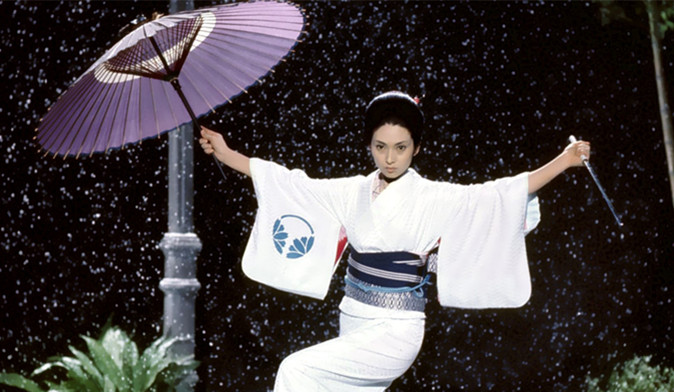
Based on the homonymous manga by Kazuo Kamimura, “Lady Snowblood” begins with Kitahma Okono, Takemura Banzo, Shokei Tokuichi and Tsukamoto Gishiro, assaulting a family, killing the husband and the son and raping Sayo, the wife. The rape continues for three days until Shokei brings her to Tokyo to be his concubine. However, Sayo eventually manages to kill him, an action that leads her to prison.
Sayo has nothing except revenge on her mind, and she ends up having sex with every guard that comes her way in an attempt to conceive a powerful son, who will exact revenge in her stead. Eventually, one of them impregnates her; however, she delivers a girl and dies during childbirth. With her last breath, she forces her fellow inmates to promise they will tend to the infant and that they will grow her up to take revenge in her stead.
Six years later, one of them hands over the little girl to a monk, Dokai, who trains her in swordsmanship and martial arts. After she completes her training, Yuki renames herself to Lady Snowblood and sets on the path of revenge.
Toshiya Fujita did a great job adapting the manga, maintaining its exploitation themes, great battles, and overall violence.
Meiko Kaji, one of the priestesses of the 70’s exploitation, found her apogee in this film, with her “cold beauty,” scarce words and great facial expressions.
The film was a major influence for Quentin Tarantino’s “Kill Bill,” where he used several of its themes and settings.
13. Sex and Fury (Norifumi Suzuki, 1973)
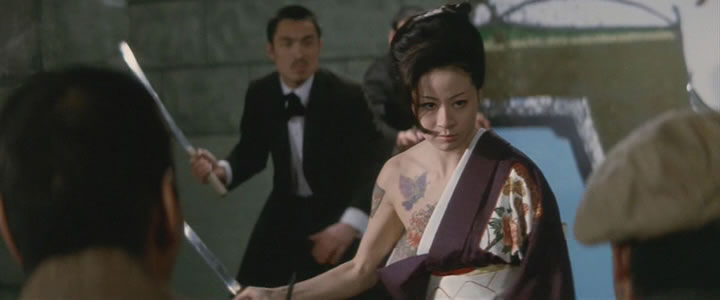
During the Meiji Era in Tokyo, Ocho witnesses her father’s death as a child, a spectacle that stigmatizes her to the point that revenge becomes eventually her sole purpose. Twenty years after the incident, Ocho has become an adept gambler, thief and swordmaster, abilities she is intent on using to exact revenge. However, the Yakuza is after her, and a friend’s dying request and a meeting with a foreign spy complicate her situation even more.
Reiko Ike, who plays Ocho, in one of her best roles, became a notorious persona in the Japanese film industry of the 70s with this film, particularly due to a scene where she fights naked in the snow slaughtering samurai and ending up covered in the blood of her victims. She was considered an equal of Meiko Kaji in the category, up to the point when she was arrested for drugs and gambling, in a tragic irony that ended her career of portraying similarly acting women.
Norifumi Suzuki made a name for himself during the 70s, the golden era of the Japanese exploitation film. However, he distinguished himself from the mass of similar filmmakers due to his film’s superior cinematography, which included the artful depiction of any kind of torture and violent acts, and for his tendency to include philosophical themes and symbolism in a genre that was utterly superficial.
These characteristics become quite evident in “Sex and Fury”, in scenes like the one with the knife-wielding nuns on the train and the various violent ones, where vivid colors and rapid camera cuts result in impressive images.
14. House (Nobuhiko Obayashi, 1977)

The script of this particular film was considered so absurd at the time that no director would take it on, in fear of ruining his or her career. Nobuhiko Obayashi, however, wanted to direct it since he initially read it, a plan he accomplished two years later.
Accordingly, in 1997 he directed this film about seven girls that visit a peculiar house during their summer vacation, where he proceeded in exterminating them in the most absurd and surrealistic way to appear in cinema, up to that point.
Obayashi creates a perverse and ingeniously maladjusted interlude that barely fits the cinematic frame, and constantly transforms from supernatural thriller to slapstick comedy and vice versa, where the special effects “flirt” with drollness, due to their absurdity.
According to him, the film was a tribute to his friends lost in the atomic explosion.
15. Star of David: Beauty Hunting (Norifumi Suzuki, 1979)
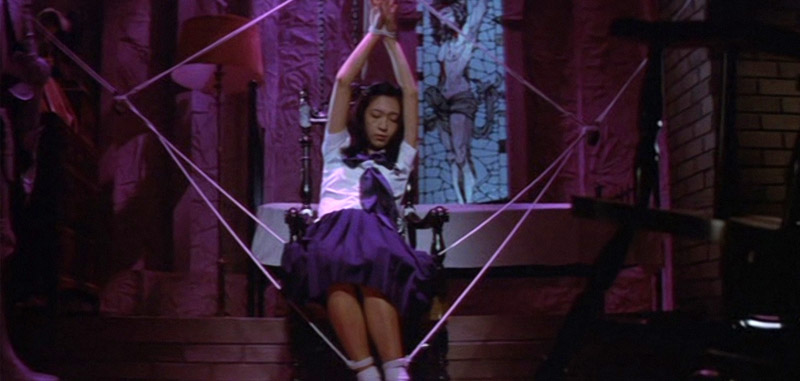
This film could easily be characterized as extreme, even for Norifumi Suzuki, since, apart from its preposterously grotesque story, it entails scenes of rape, necrophilia, minor bestiality, and a whole lot of other sadistic and brutal notions.
The film begins in the 1950s, when a man enters a wealthy house and proceeds on raping the wife in front of her husband. After the two climax together, he just packs and vacates, leaving the woman pregnant. The husband is infuriated by the incident and lashes out at his wife, blaming her for her pregnancy. What follows are years of violent abuse toward her, that even extend to the kid born a while later, and the suicide of the gravely ashamed and tortured wife.
However, the film’s main protagonist is Tatsuya, the aforementioned boy, who, 20 years later, is as equally deranged as his biological and stepfather, following the tendencies of both.
Apart from the preposterous themes, characters and incidents, the film also stands out for its large budget that resulted in great production values that make the film appear even more shocking.